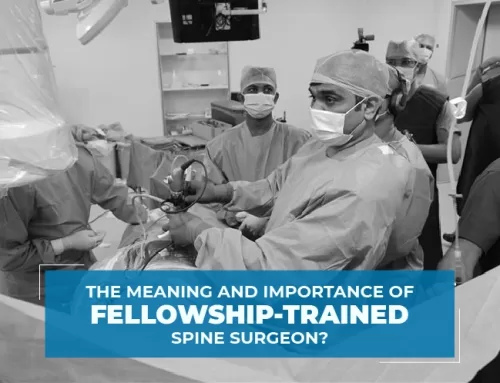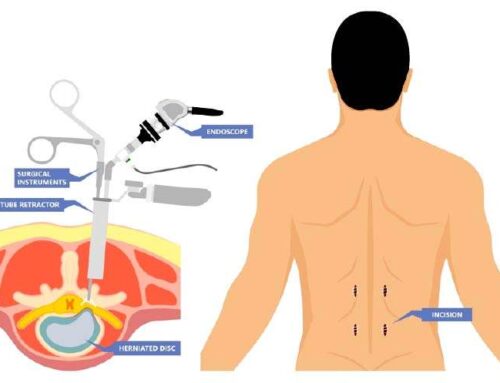Endoscopic spine surgery represents a significant advancement in spinal health, offering a minimally invasive alternative to traditional open spine procedures. This technique known as endoscopic spine surgery that allows for effective treatment of various spinal conditions with minimal disruption to the body. As a result, patients experience quicker recovery and less postoperative pain. In this blog, we will explore the intricacies of endoscopic spine surgery including its benefits common procedures and what to expect during the process.
What is Endoscopic Spine Surgery?
Endoscopic Spine Surgery in India is a minimally invasive technique used to treat a range of spinal conditions. It involves using an endoscope a thin flexible tube with a camera and light source to view and operate on the spine through very small incisions. This method contrasts with traditional open spine surgery which requires larger incisions and more extensive disruption of surrounding tissues.
How It Works
Types of Endoscopic Spine Surgery
Endoscopic Spine Surgery in India encompasses various procedures, each tailored to address specific spinal issues. Here are the main types:
1. Endoscopic Discectomy
2. Endoscopic Foraminotomy
3. Endoscopic Laminectomy
4. Endoscopic Decompression
Benefits of Endoscopic Spine Surgery
Endoscopic Spine Surgery in Ahmedabad offers several notable advantages over traditional open procedures improving patient outcomes and recovery experiences.
Minimally Invasive
- 1Less Trauma: Smaller incisions result in less damage to surrounding tissues which reduces postoperative pain and scarring. This minimally invasive approach contributes to a more comfortable recovery process.
- 2Quicker Healing: Patients typically experience faster recovery times due to the reduced invasiveness of the procedure, allowing them to return to their daily activities sooner.
Reduced Blood Loss
- 1Minimal Hemorrhage: The nature of endoscopic surgery often leads to significantly less blood loss compared to open surgeries and reducing the risk of complications associated with excessive bleeding.
- 2Lower Risk of Transfusion: The reduced need for blood transfusions enhances overall safety during the procedure and minimizes the risk of transfusion related complications.
Shorter Hospital Stay
- 1Same-Day Discharge: Many patients are able to go home the same day or the following day, depending on the procedure and their condition. This shorter hospital stay contributes to reduced healthcare costs and a more convenient recovery process.
- 2Reduced Hospital Costs: Shorter stays not only lead to lower overall treatment costs but also lessen the burden on healthcare facilities and resources.
Faster Recovery
- 1Quicker Return to Activities: Patients often resume daily activities and return to work sooner compared to those undergoing open surgery. This faster recovery allows individuals to regain their normal routines more quickly.
- 2Less Postoperative Discomfort: Reduced pain and faster healing contribute to a more comfortable recovery process, improving overall patient satisfaction.
Lower Risk of Complications
- 1Fewer Infections: Smaller incisions reduce the risk of wound infections, enhancing the overall safety and effectiveness of the procedure.
- 2Reduced Risk of Blood Clots: The minimally invasive approach lowers the likelihood of developing deep vein thrombosis or other complications, contributing to a safer postoperative experience.
Common Conditions Treated with Endoscopic Spine Surgery
Endoscopic spine surgery Ahmedabad is effective for a variety of spinal conditions each benefiting from the minimally invasive approach.
Herniated Discs
- 1Description: The gel like centre of a disc pushes through a tear in the outer layer, pressing on spinal nerves and causing pain and discomfort. Endoscopic discectomy effectively addresses this issue by removing the protruding disc material.
- 2
Treatment: The endoscopic approach allows for targeted removal of the herniated material through a small incision, providing relief from nerve pressure and reducing associated symptoms.
Spinal Stenosis
- 1Description: This condition involves narrowing of the spinal canal, which compresses the spinal cord or nerves and leads to pain and weakness. Endoscopic laminectomy helps alleviate these symptoms by creating more space within the spinal canal.
- 2Treatment: By removing the constricting bony structures the endoscopic procedure reduces pressure on the spinal cord and nerves improving overall function and quality of life.
Foraminal Stenosis
- 1Description: Narrowing of the foramen, where nerves exit the spinen causes nerve compression and results in pain, numbness and weakness. Endoscopic foraminotomy enlarges these openings to alleviate symptoms.
- 2Treatment: The procedure involves removing bone or tissue obstructing the nerve root restoring nerve function and reducing associated symptoms.
Degenerative Disc Disease
- 1Description: Wear and tear of spinal discs leads to pain and reduced mobility. Endoscopic techniques address the affected discs to alleviate discomfort and improve function.
- 2Treatment: Endoscopic procedures can help manage symptoms by targeting the degenerated discs and reducing pain allowing for better mobility and quality of life.
What to Expect Before, During and After the Procedure
Understanding the process of endoscopic spine surgery at Asian Hospital helps in preparing for the procedure and ensuring a smooth recovery. By familiarizing yourself with the steps involved and what to expect. you can better manage your treatment journey and enhance your overall recovery experience.
Before the Procedure
During the Procedure
After the Procedure
Conclusion
Best Endoscopic spine surgery at Asian Hospital represents a modern and effective approach to treating spinal conditions with minimal invasiveness. This technique offers numerous benefits including reduced pain, faster recovery and fewer complications compared to traditional open spine surgeries. If you are considering Top endoscopic spine surgery consulting with the specialists at Asian Hospital will help determine if this innovative method aligns with your treatment needs With proper care and guidance. you can look forward to a quicker return to daily activities and an improved quality of life.





